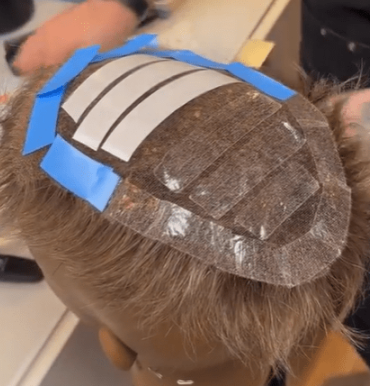How Do You Make a Wig Not Fall Off - Best Ways to Secure Your Wig
Wearing a wig can be a great way to experiment with different hairstyles or cover hair loss. However, the biggest fear when wearing a wig is that it is not secure. Why does someone else's wig never fall off, and why is your wig not secure when worn? How can you ensure that your wig is firm and not easy to fall off? In this article, we will provide you with some tips and tricks to make your wig more secure.

How to Secure a Wig & Make it Stay On
Use a wig cap
Wearing a wig cap is a great way to secure your wig on your head. Wig caps are thin, breathable, and usually made of nylon or mesh. They help to create a smooth surface for your wig to sit on and prevent your natural hair from poking out from under the wig. Wig caps also absorb sweat, so they can help to keep you comfortable if you’re wearing your wig for an extended period.
To use a wig cap, simply place it over your head, tucking any stray hairs inside, and position it to cover your hairline. Then, place your wig over the wig cap and adjust it to your desired position. Wig caps come in different sizes, so make sure to choose one that fits your head snugly.
Secure with bobby pins
Bobby pins are a simple and effective way to keep your wig in place. To use bobby pins, start by placing your wig on your head and adjusting it to your desired position. Then, take a bobby pin and slide it through the wig and into your natural hair, making sure to catch some of your own hair in the pin. Repeat this process on the other side of your head, and then add more bobby pins as needed to keep the wig secure. Make sure to use bobby pins that match the color of your wig for a seamless look.
Use adhesive
If you want an even more secure hold, you can use adhesive to attach your wig to your head. Wig adhesive comes in different forms, including liquid, tape, and glue. Liquid adhesive is applied directly to your scalp, while tape and glue are applied to the perimeter of your wig. Make sure to choose an adhesive that is safe for use on skin and hair, and to follow the manufacturer’s instructions carefully.
To apply adhesive, start by preparing your scalp and the perimeter of your wig. Clean your scalp with rubbing alcohol and let it dry completely. Then, apply a thin layer of adhesive to your scalp or the perimeter of your wig, depending on the type of adhesive you’re using. Wait a few seconds for the adhesive to become tacky, and then carefully place your wig on your head, pressing it down firmly. You may want to use a wig cap to protect your scalp from the adhesive. Make sure to avoid applying adhesive too close to your hairline, as it can be difficult to remove without pulling out your natural hair.
Adjust the wig straps
Most wigs come with adjustable straps that allow you to customize the fit of your wig. To adjust the straps, start by putting your wig on and positioning it correctly. Then, locate the straps at the back of the wig and adjust them to fit snugly around your head. Make sure not to adjust the straps too tightly, as this can cause discomfort and headaches.
Choose the right wig size
One of the most important factors in ensuring a secure fit is choosing the right wig size. Wigs come in different sizes, ranging from petite to large. To determine your wig size, measure the circumference of your head at its widest point, usually just above your eyebrows and ears. Then, consult a wig size chart to find the size that corresponds to your measurement. If your head falls between two sizes, choose the larger size for a more comfortable fit.
Trim the wig
If your wig is too loose or too long, you can trim it to fit more securely.
Take care of your wig
Regular cleaning and maintenance of wigs can also have a certain impact on their firmness. Because wigs can become damaged or loose over time, the threads of the sewing clips may also become loose. Regularly check and clean wigs, and store them properly when not in use to ensure better wearing next time.

